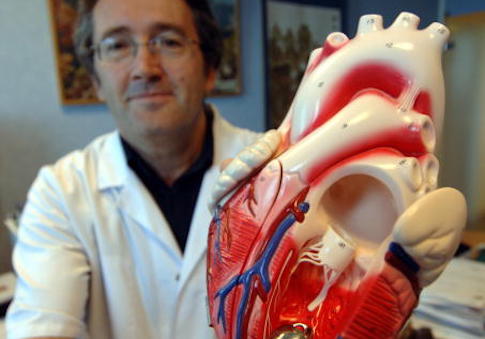A $4 million federal study claims that perfume and female clothing can "strongly trigger gendered assumptions" that can prevent women from becoming cardiologists.
The National Institutes of Health is funding research on whether there is bias against women in the government's peer review grant making process. Results produced by Dr. Molly Carnes, a woman, have concluded that women are at a disadvantage in receiving federal funding for their research. Carnes is the director of the University of Wisconsin's Center for Women's Health Research.
One such paper, published in February, is entitled "Women Are Less Likely Than Men to Be Full Professors in Cardiology: Why Does This Happen and How Can We Fix It?"
The paper was funded by an NIH study that has received $3,927,208 since 2013, including $696,995 this year.
The paper argues that wearing perfume can disadvantage female heart doctors, and men who wear white coats and carry a stethoscope "could foster gender bias."
"Trivial amounts of information (eg, the male or female name or picture on an application) bring unbidden the stereotype to mind," Carnes and co-author C. Noel Bairey Merz, the director of the Women's Heart Center at Cedars-Sinai Medical Center in Los Angeles. "Once activated, these stereotypes disadvantage women being evaluated for or in top leadership/high-status/technical roles."
The paper also claims tall men have an advantage to becoming leaders in the cardiology field.
"Information that may strongly trigger female-gendered assumptions, such as motherhood, attractiveness, perfume, or feminine attire, can further disadvantage women, just as being tall implicitly advantages men in their rise toward leadership," the paper continues.
Women are also scared of receiving an adverse reaction from men when performing CPR.
"Women also learn from an early age that they cannot simply 'act like a man' to succeed in male-gendered roles," according to the paper. "Social reprisals invariably follow behaviors that stray from female gender norms with admonishments not to be bossy, not to brag, and to be nice. This internalized 'fear of backlash' was expressed by the female residents in describing their experiences leading cardiopulmonary resuscitative events."
The paper also claims gender bias can be unintentionally encouraged when men wear white coats and stethoscopes.
"External primes for objectivity, such as wearing a white coat, carrying a stethoscope, or using honorific titles, could foster gender bias—however unintentionally or unwittingly—in judgments about equally performing men and women that would advantage men," according to the paper.
Carnes and Bairey Merz suggest avoiding phrases on job postings such as looking for a "charismatic leader," because that can give an advantage to a man.
"The words and descriptors we use can reinforce and transmit gender stereotypes," they write. "Abstract words that trigger a male gender stereotype will favor male applicants."
They also suggest medical departments should hold 2.5 hour "gender bias habit reducing interventions" to promote gender equity.
The paper was funded by the NIH study, and Bairey Merz also receives funding from the Barbra Streisand Women's Cardiovascular Research and Education Program.
Carnes told the Washington Free Beacon that the grant supports research of two other scientists at the University of Wisconsin, Dr. Cecilia Ford and Patricia Devine.
Carnes said she hopes her research is valuable to taxpayers because she is studying how the NIH makes decisions on what projects receive funding.
"I hope that the research will be of interest and use to both taxpayers and the scientific community because we are trying to understand how scientists make decisions to fund research," she said. "And, like NIH, we are interested in how the review process can be continually improved to ensure that our public dollars are invested in the best science with the ultimate goal of improving health and training the biomedical, clinical, and behavioral researchers of the future."
"Data is still being gathered on some of the studies," Carnes added.
Carnes also provided several other papers produced by the study, including a 2016 paper that found that the NIH's peer review process continues to have "subtle gender bias" against women.
A 2016 paper found that women with "outstanding" track records who mentor under others are more likely to become independent researchers.
Another paper reported that NIH-funded researchers who are men are described as "leaders" and "pioneers," while women are characterized as having "expertise."
[Are Female Applicants Disadvantaged in National Institutes of Health Peer Review?]
Carnes specializes in "workforce diversity issues" for women in STEMM, which adds medicine to the shorthand for science, technology, engineering, and math.
Other published results from the $4 million study include a paper on stereotypes in academic medicine entitled, "Stuck in the Out-Group: Jennifer Can't Grow Up, Jane's Invisible, and Janet's Over the Hill."
The paper on female cardiologists is also listed under published results for a separate NIH project that is studying "unconscious bias" workshops for future scientists that has received $1,022,154 since 2015.
